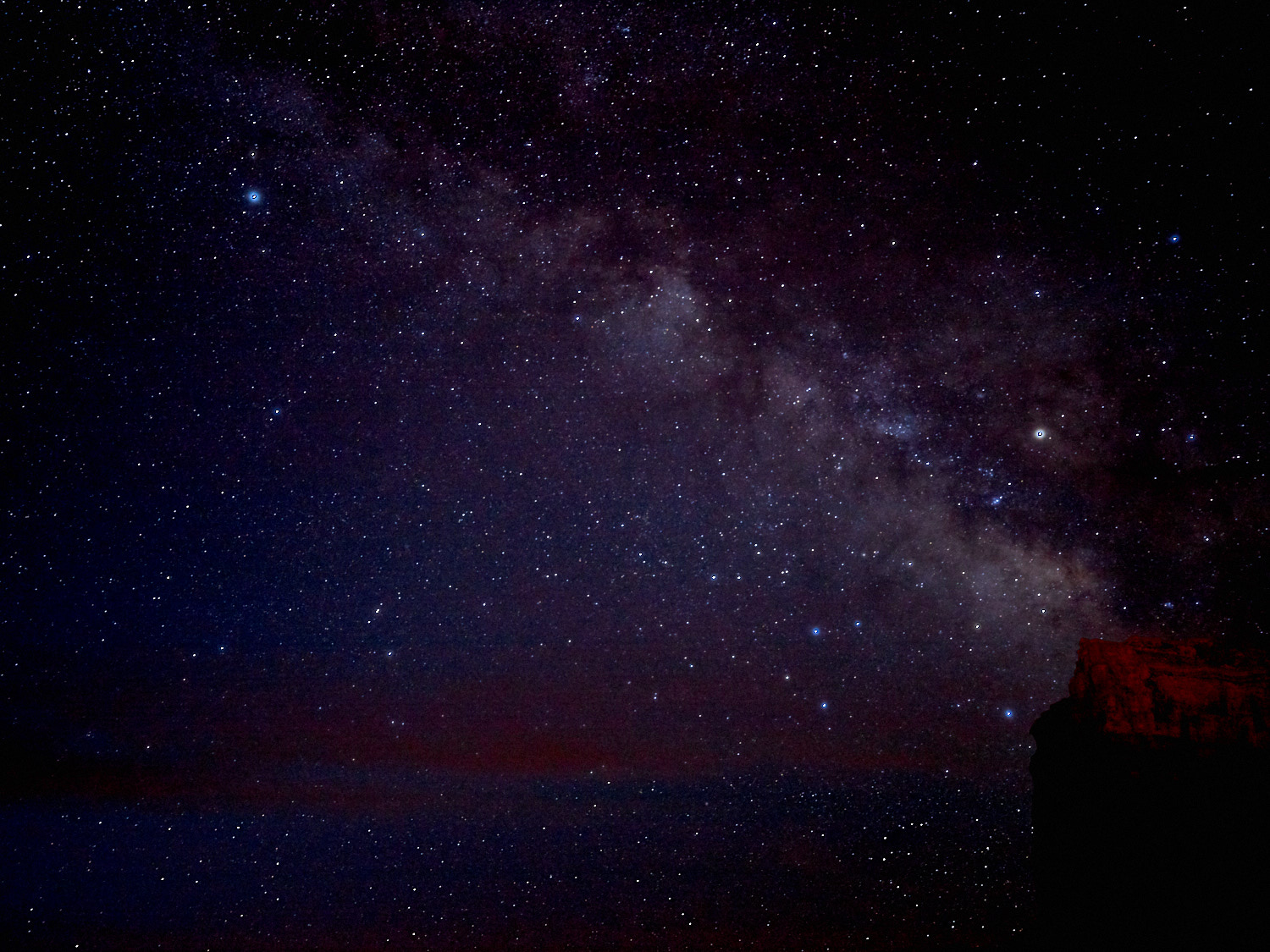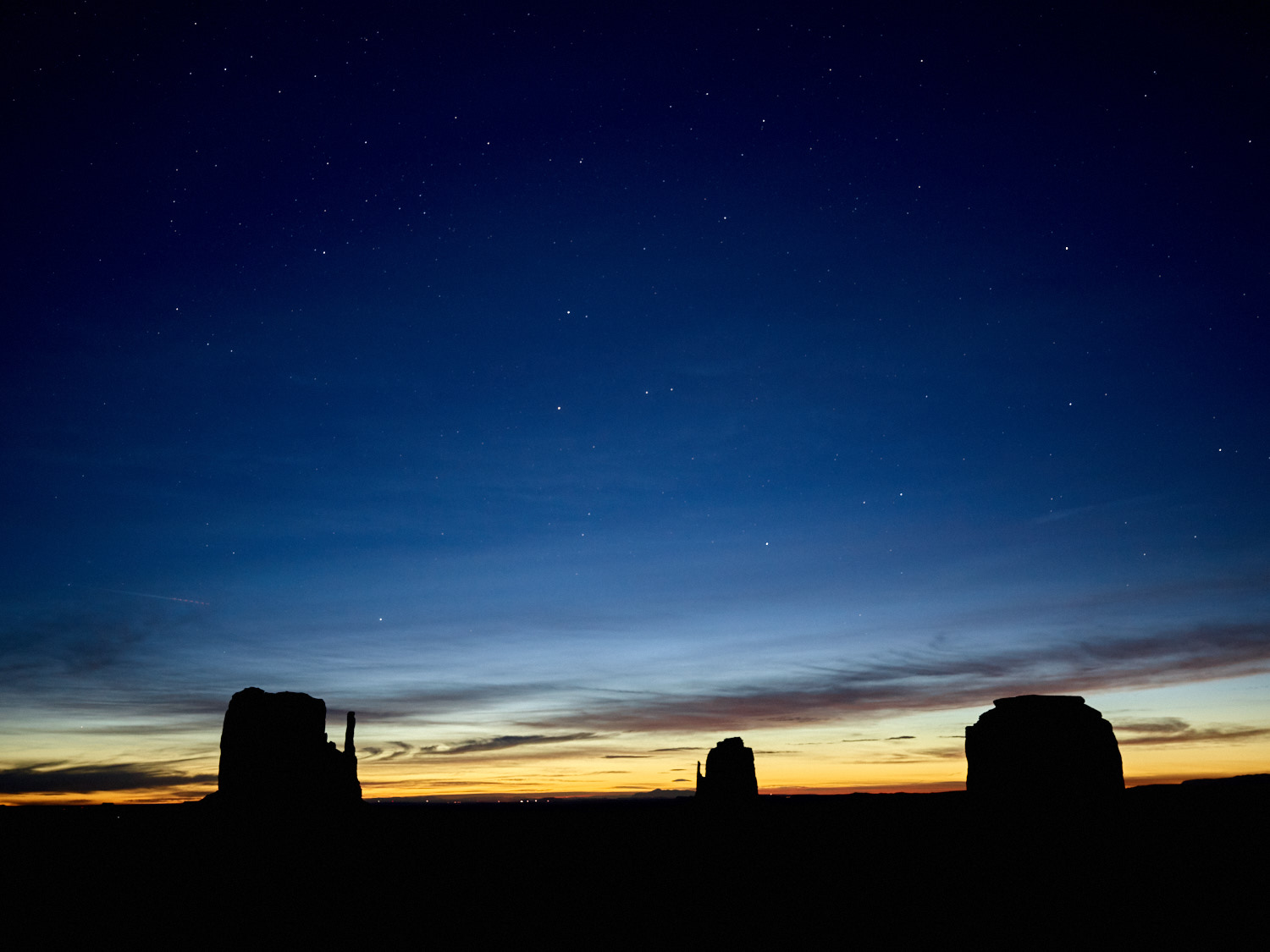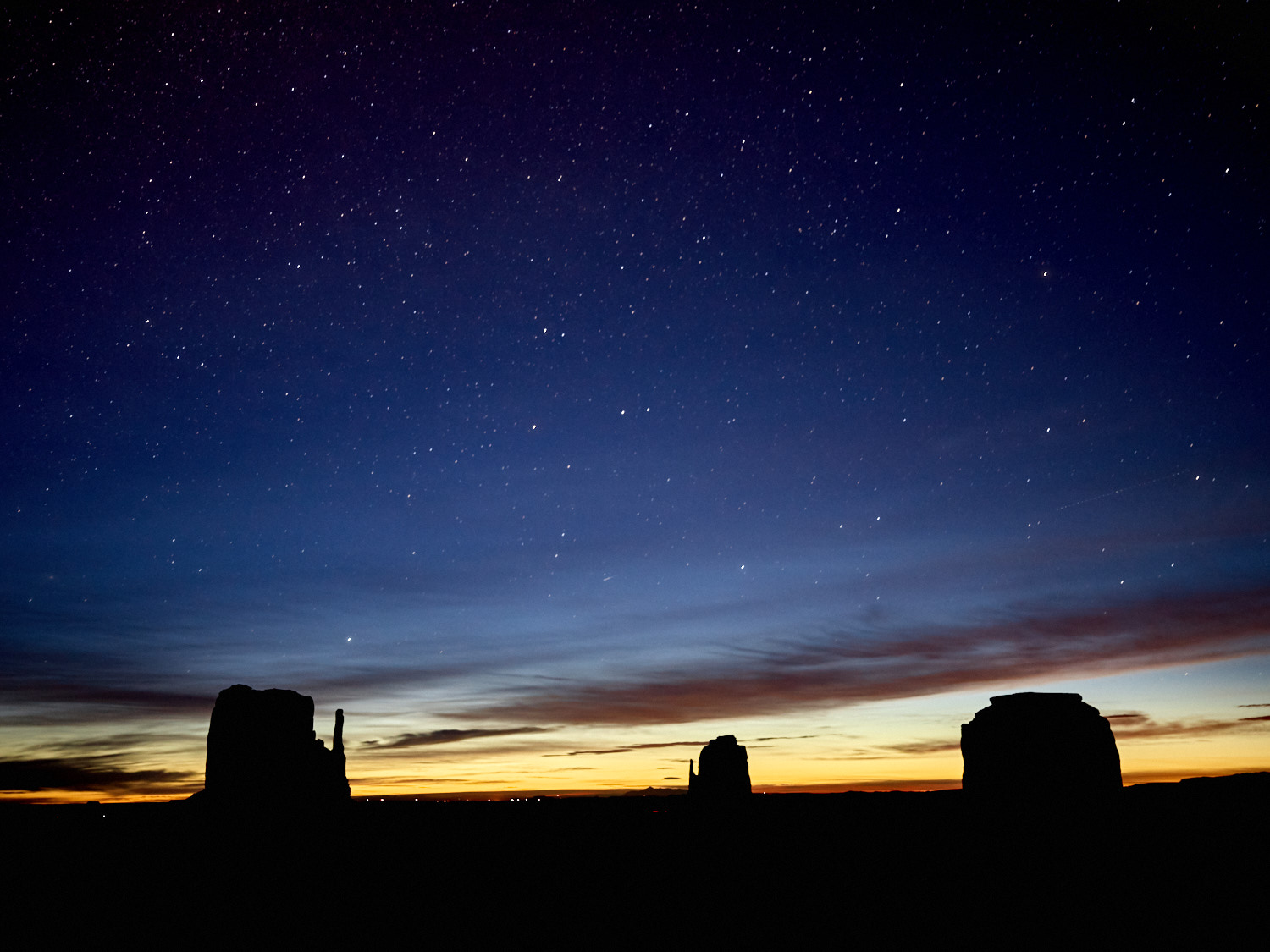Recently I was in Monument Valley and took this picture early in the morning. This turned out to be a pretty neat result, so I check the time relative to sunrise for future reference so I could do this again. Along the way I learned just what “nautical dawn” actually is.
Apps like The Photographer’s Ephemeris and PhotoPills are an incredibly useful for anyone needing to know where the sun and moon will be in the sky at particular time and place. It includes rise and set times, and also times for “golden hour”, and start and end times for both civil and nautical twilight. Both apps include many other features, with TPE concentrating on events such as sunsets and PhotoPills is essentially a Swiss army knife for various photographic calculations.
On this particular morning, though, I didn’t use TPE because my intention was capture the Milky Way. This was in late March in Monument Valley, and I was planning to shoot the galactic core around 4AM. Alas, I’m not a great morning person and my eyes opened just after 5:30AM. By this time the core had moved south and was obscured from my remote, hotel balcony location.

Milky Way
35mm f/3.5 ISO 3200 15s
The camera was ready to go so I took a few rather uninteresting pictures of the northern parts of the galaxy. At about 6AM, which turned out to be about 10 minutes prior to nautical dawn (and about 70 minute before sunrise), I noticed a small amount of light on the eastern horizon. The sky above was still nearly black, though I could just make out some fuzzy clouds near the horizon. I pointed the camera east, set the shutter for 30s, and made this image of the well-known Monument Valley buttes.

35mm f/3.5 ISO 1600 10s
I continued shooting for a few more minutes, but growing glow of the early morning twilight was overpowering the stars, and while a few stars were still visible, the first one turned out to the most dramatic.
So, just what is nautical twilight? Nautical twilight is a time when, with a clear sky, it is possible to see both the brightest stars and see a clear horizon. Sea navigation relies on tracking the relative position of the stars with the horizon, so during the morning and evening nautical twilight is best time for navigators to get a reliable reading with a sextant. Although this picture was taken just before nautical twilight started, it is perhaps a good example of what a navigator might hope see, except for the buttes of course.
